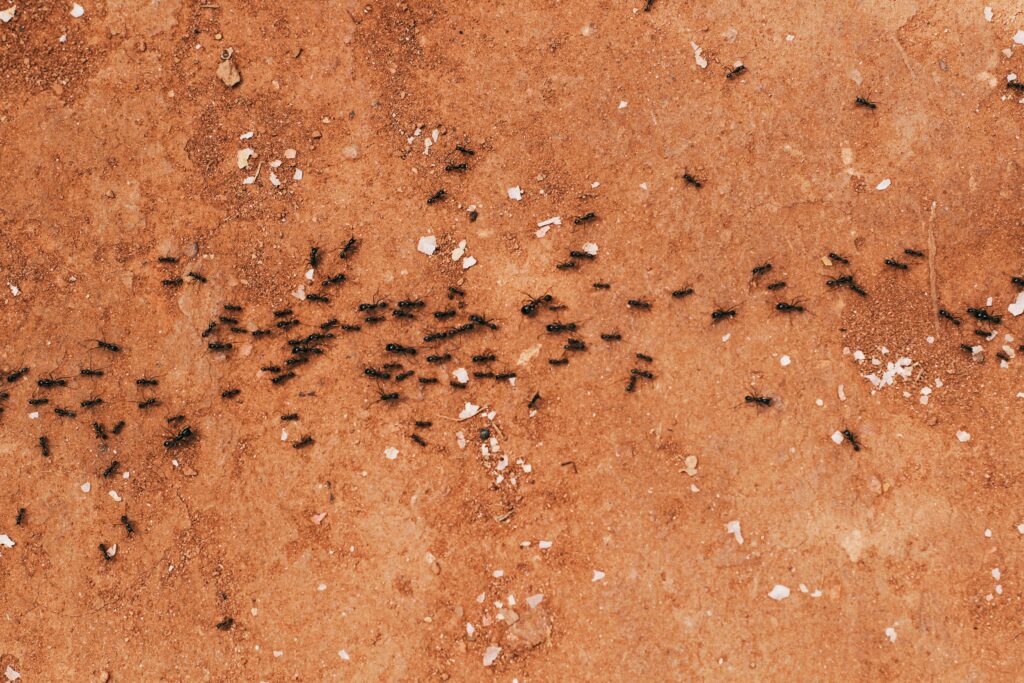Ants are incredibly resilient and adaptable creatures, capable of infiltrating our homes, gardens, and workplaces with ease. While they play important roles in ecosystems, their presence indoors can be unwelcome and even detrimental. To maintain a pest-free environment, mastering ant control is essential. In this article, we’ll delve into effective strategies for managing ant infestations, from prevention to eradication.

Understanding Ant Behavior
Before delving into control methods, it’s crucial to understand ant behavior. Ants are social insects that live in colonies, with each colony typically containing a queen, workers, and sometimes soldiers. They communicate primarily through pheromones, allowing them to coordinate activities such as foraging and defense. Ants are attracted to food sources, moisture, and shelter, making our homes and businesses prime targets for infestation.
Prevention Strategies
Preventing ant infestations begins with denying them access to food, water, and shelter. Here are some proactive measures to consider:
- Maintain Cleanliness: Regularly clean countertops, floors, and other surfaces to remove food crumbs and spills that attract ants.
- Store Food Properly: Keep food items in airtight containers to prevent ants from accessing them.
- Seal Entry Points: Seal cracks, gaps, and crevices in walls, floors, and foundations to prevent ants from entering buildings.
- Address Moisture Issues: Fix leaks and eliminate sources of standing water to deprive ants of essential moisture.
- Trim Vegetation: Keep trees, shrubs, and plants trimmed away from the exterior of buildings to reduce ant access points.
By implementing these preventive measures, you can minimize the likelihood of ant infestations and create a less hospitable environment for these pests.
Identification of Ant Species
Effective ant control requires accurate identification of the species involved. Different ant species may require different control strategies, so it’s essential to correctly identify the ants present. Common indoor ant species include odorous house ants, pavement ants, and carpenter ants. Consulting with a pest control professional or utilizing online resources can help in identifying ant species accurately.
Non-Chemical Control Methods
For those who prefer non-chemical approaches or have concerns about pesticide use, several non-chemical control methods can be effective:
- Baiting: Use commercially available ant baits containing slow-acting toxins that worker ants carry back to the colony, ultimately eliminating the entire colony.
- Diatomaceous Earth: Sprinkle food-grade diatomaceous earth in areas where ants are active. This abrasive powder damages the ants’ exoskeletons, leading to dehydration and death.
- Vinegar Solution: Spray a mixture of vinegar and water along ant trails and entry points to disrupt their pheromone trails and deter them from returning.
These methods can be effective for managing ant infestations while minimizing reliance on chemical pesticides.
Chemical Control Methods
In cases of severe infestations or when non-chemical methods are ineffective, chemical control may be necessary. When using chemical pesticides, it’s essential to follow label instructions carefully and consider the following:
- Indoor Treatments: Apply insecticide sprays or dusts to cracks, crevices, and other areas where ants are active. Pay particular attention to entry points and ant trails.
- Outdoor Treatments: Apply perimeter treatments around the exterior of buildings to create a barrier that prevents ants from entering.
- Professional Pest Control: Consider hiring a licensed pest control professional for comprehensive ant control services, especially for persistent or large-scale infestations.
While chemical control methods can be highly effective, they should be used judiciously and as part of an integrated pest management approach.
Integrated Pest Management (IPM)
Integrated Pest Management (IPM) combines multiple strategies to manage pests effectively while minimizing environmental impact and health risks. Key components of IPM for ant control include:
- Monitoring: Regularly inspecting indoor and outdoor areas for ant activity and identifying conducive conditions for infestations.
- Prevention: Implementing preventive measures to minimize ant access to food, water, and shelter.
- Mechanical Controls: Using physical barriers and traps to capture and exclude ants from buildings.
- Cultural Controls: Modifying practices and environments to make them less favorable to ants, such as reducing clutter and maintaining landscaping.
- Chemical Controls: Using pesticides judiciously and selectively when necessary, prioritizing less toxic options and minimizing exposure to non-target organisms.
By integrating these approaches, IPM provides a comprehensive and sustainable solution to ant control.
Conclusion
Mastering ant control is essential for maintaining a pest-free environment in homes, businesses, and public spaces. By understanding ant behavior, implementing preventive measures, and employing a combination of non-chemical and chemical control methods, you can effectively manage ant infestations while minimizing environmental impact and health risks. Integrated Pest Management (IPM) offers a holistic approach that balances effectiveness with sustainability, ensuring long-term success in ant control efforts. With diligence and strategic planning, you can achieve and maintain a pest-free environment that is inhospitable to ants and other unwanted pests.

